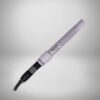
Microclimate monitoring involves the measurement and analysis of climatic conditions that occur in small, localized areas. Microclimates can vary greatly from the general climate conditions of a larger region, and they are influenced by a variety of factors, such as vegetation, topography, and human activity. Monitoring microclimates is important in many different fields, including agriculture, urban planning, and conservation.
Microclimate evaluation involves collecting and analyzing data related to environmental factors such as temperature, humidity, wind speed, and rainfall. This data is typically gathered using specialized weather monitoring equipment, such as weather stations, which can be installed in various locations such as farms, gardens, and urban areas.
The data collected by weather stations and other monitoring equipment is often used to create models that help predict microclimate conditions. For instance, a model could help predict temperature and humidity levels in a greenhouse based on current and historical data, allowing growers to optimize their plant-growing conditions.
Another application of microclimate monitoring is to study how microclimates impact ecosystems and species. By analyzing microclimate data, conservationists can identify the ideal environmental conditions for certain species, and make informed decisions about where and how to protect and conserve them.
Weather stations are essential tools for microclimate monitoring, as they can measure a range of environmental factors. These include temperature, humidity, wind speed, and rainfall, among others.
Weather stations are typically equipped with sensors that collect data on these factors, which is then transmitted to a central database where it can be analyzed. This data can help farmers optimize growing conditions for crops, urban planners design more efficient and sustainable cities, and conservationists protect and preserve vulnerable species.
For example, in agriculture, weather stations can help farmers optimize irrigation and fertilization schedules, and also monitor the spread of pests and diseases. In urban planning, weather stations can help city planners design more efficient energy and transportation systems, and also identify areas where green spaces can help regulate temperature and improve air quality. In conservation, weather stations can help researchers identify areas that are particularly vulnerable to climate change, and take appropriate measures to protect endangered species.
Microclimate monitoring is an important tool for a variety of fields, including agriculture, urban planning, and conservation. By collecting and analyzing data related to microclimate conditions, experts can make informed decisions about how to optimize environmental conditions for specific applications. Weather stations are essential tools for microclimate monitoring, as they allow experts to gather precise data on environmental factors that influence microclimates. With advances in technology, it is now possible to monitor microclimates in real time, providing valuable insights into how different environmental factors impact ecosystems and species.

Pyranometer and solar tracker are commonly used in microclimate monitoring to measure the amount of energy from the sun that is reaching a particular location. This information can be used to understand how sunlight affects local temperature and humidity, which are important factors in understanding microclimate patterns. By measuring solar radiation, researchers can better understand the unique conditions of a given microclimate and develop strategies for managing and adapting to those conditions.

A rain gauge are often used in microclimate monitoring to measure the amount of precipitation that falls in a specific location. This information is important for understanding local water balance, which can influence soil moisture, plant growth, and other factors that contribute to the unique characteristics of a microclimate. By monitoring rainfall, researchers can develop a more complete picture of the environmental conditions in a given area and make informed decisions about land use and management practices.

Anemometer are commonly used in microclimate monitoring to measure wind speed and direction, which can affect temperature and humidity patterns in a given area. By measuring wind conditions, researchers can better understand how air moves through a microclimate and how it affects local weather patterns. This information can be useful for managing agricultural or other land use practices that are sensitive to microclimate conditions.

A Barometric Pressure Sensor are often used in microclimate monitoring to help correct for changes in atmospheric pressure that can affect weather patterns and environmental conditions. By measuring barometric pressure, researchers can account for changes in air pressure that may influence temperature, humidity, and other factors in a given microclimate. This information can be useful for understanding the unique characteristics of a particular area and developing strategies for managing and adapting to those conditions.

An ambient temperature sensor are commonly used in microclimate monitoring to measure the temperature of the surrounding air in a specific location. This information is important for understanding the unique temperature patterns of a given microclimate, which can influence plant growth, animal behavior, and other factors. By monitoring ambient temperature, researchers can better understand the environmental conditions in a particular area and develop strategies for managing and adapting to those conditions.

A module temperature sensor are commonly used in microclimate monitoring to measure the temperature of specific objects or surfaces, such as soil, plant leaves, or building materials. This information is important for understanding how heat is distributed throughout a microclimate and how it affects local environmental conditions. By monitoring module temperature, researchers can develop a more complete picture of the unique characteristics of a given microclimate and make informed decisions about land use, building design, and other factors that can influence microclimate patterns.